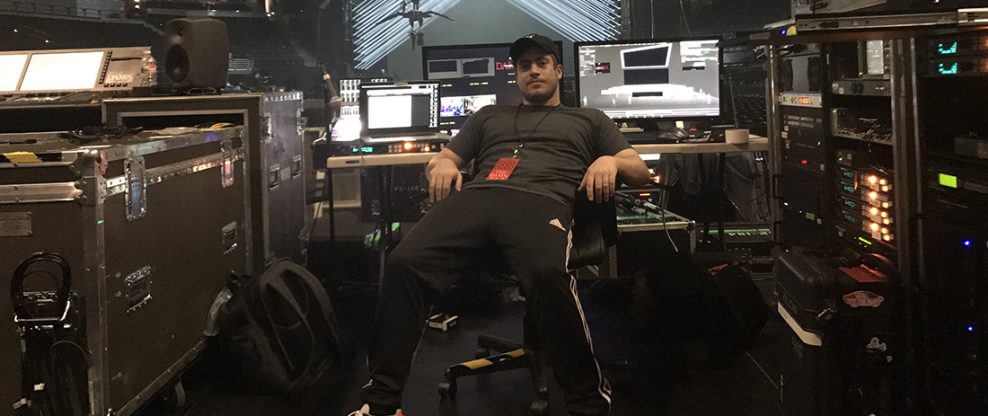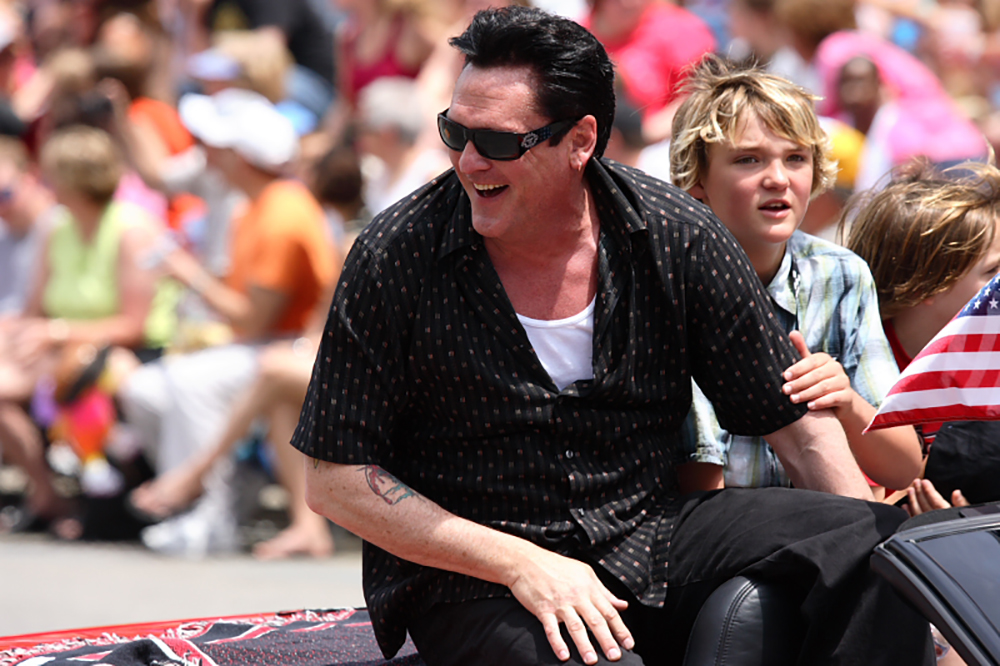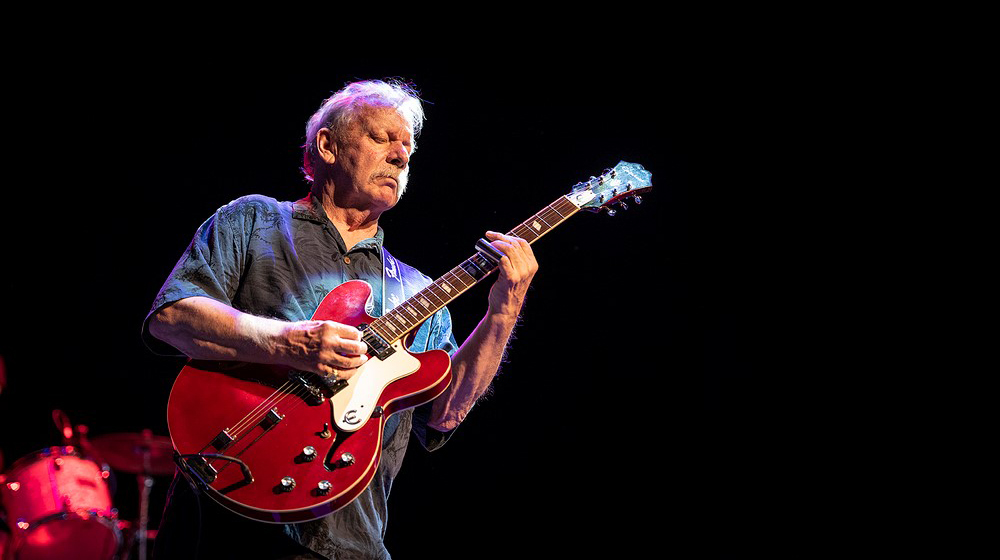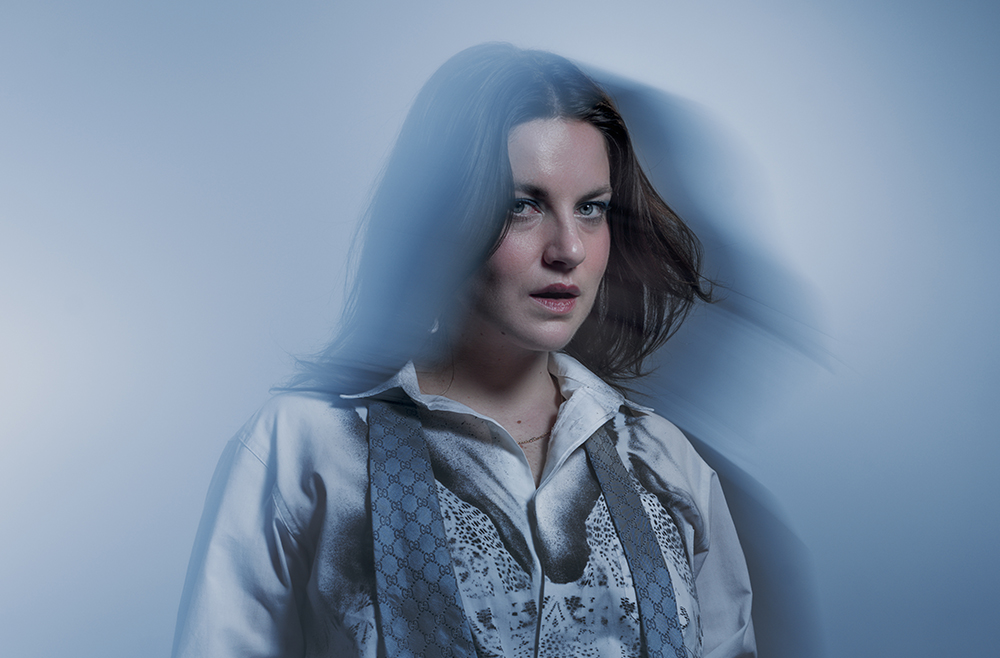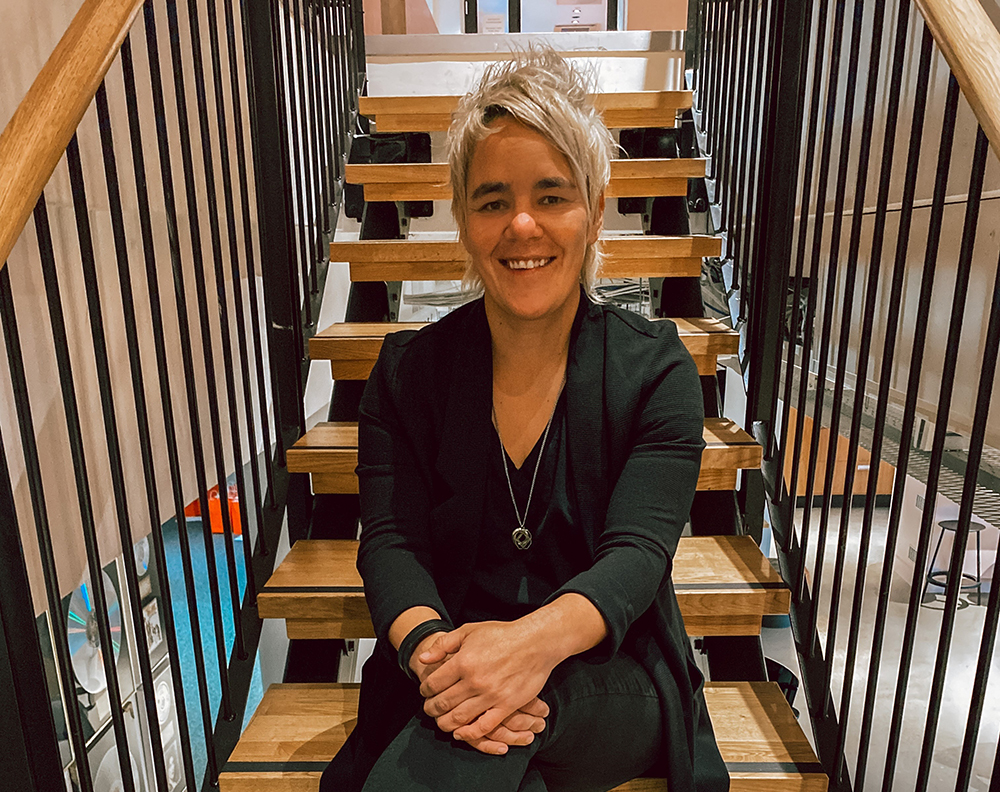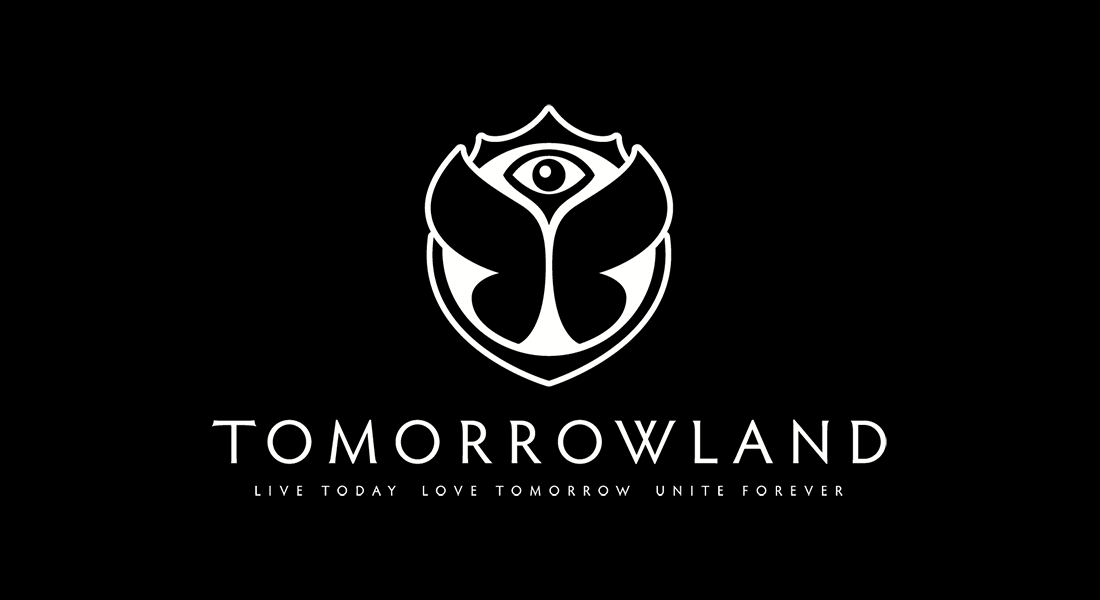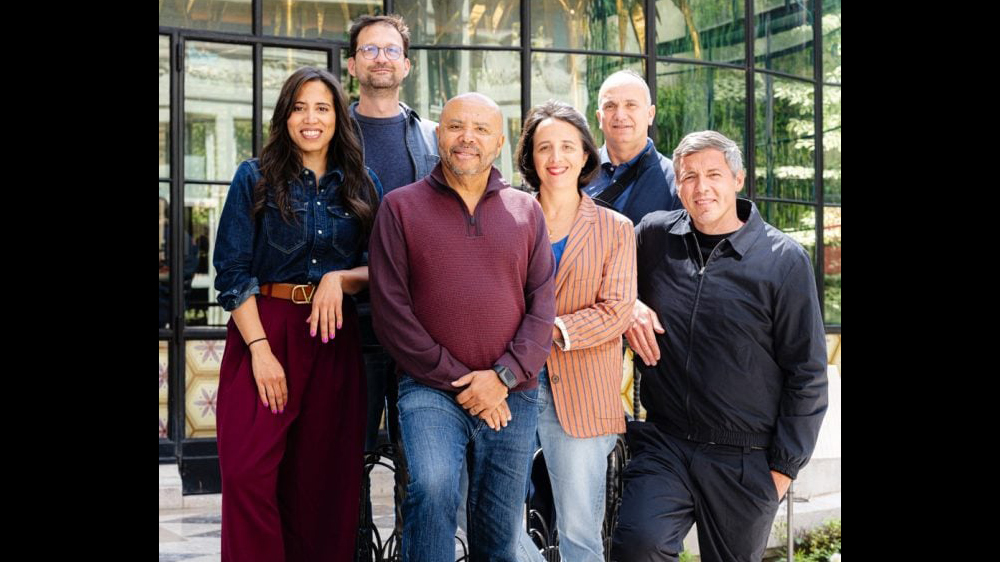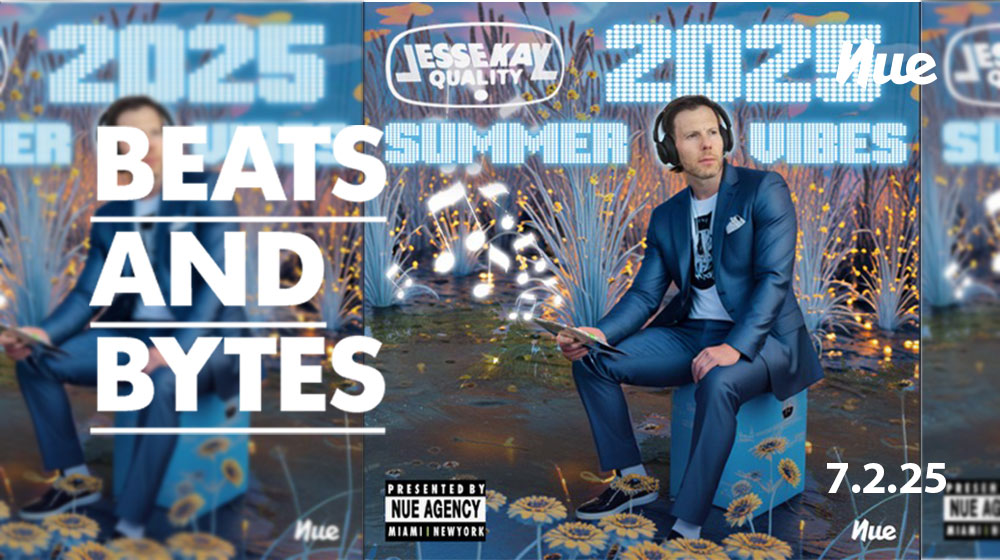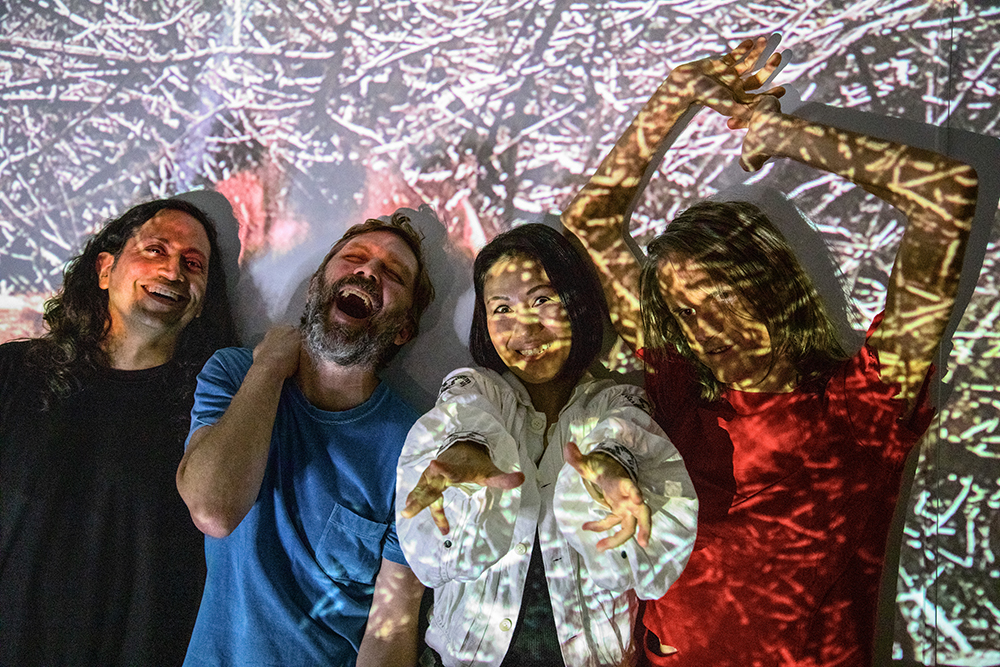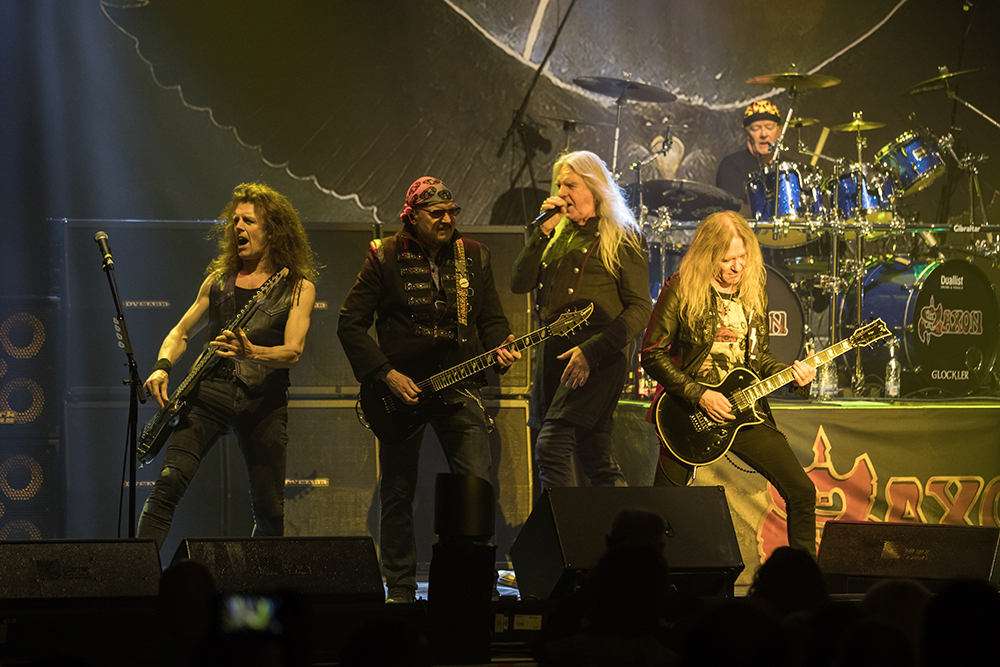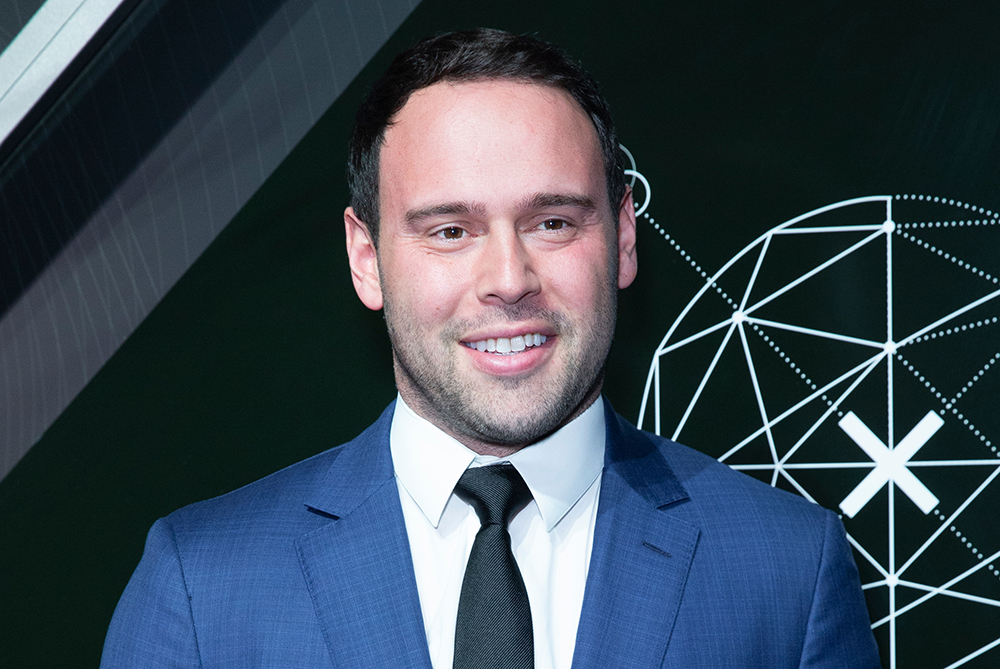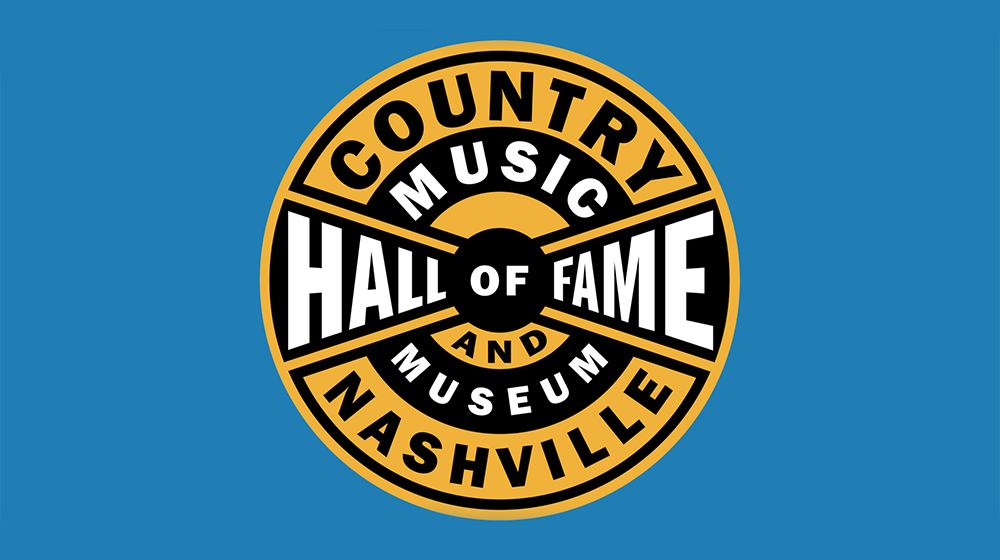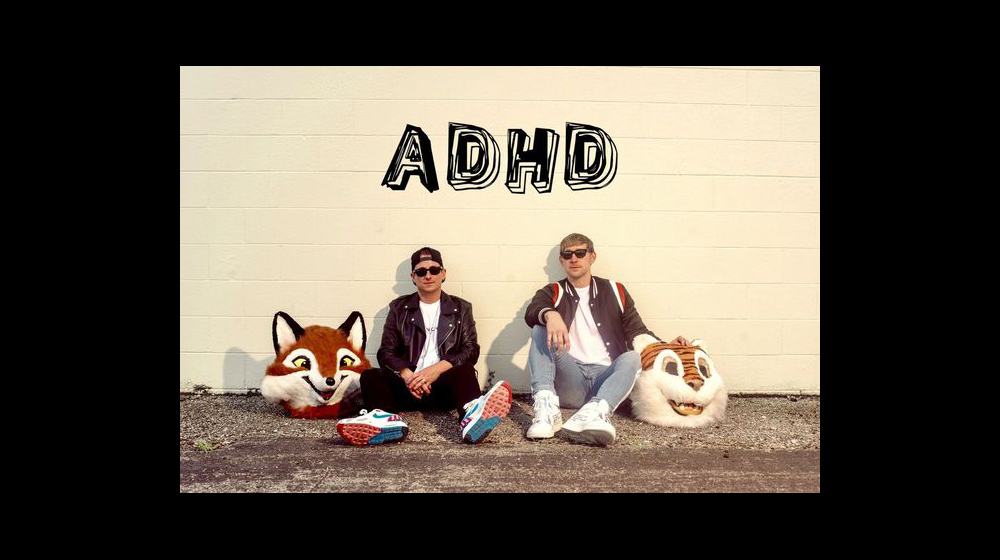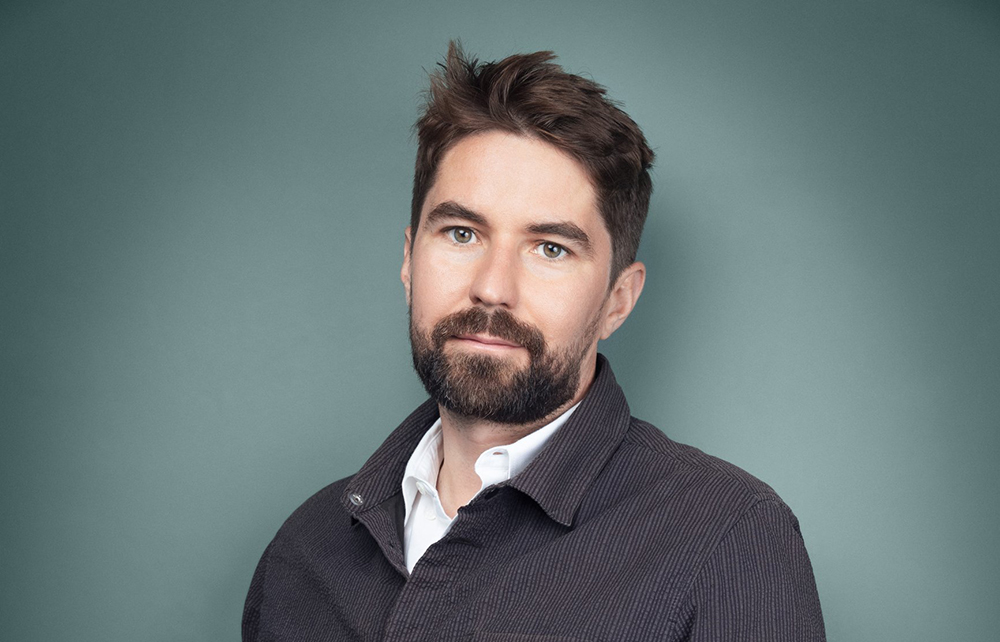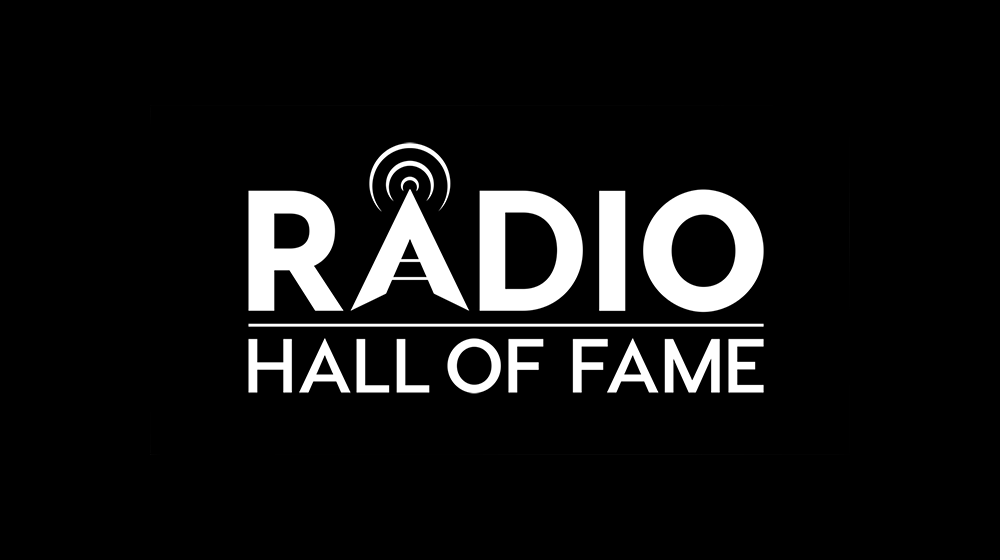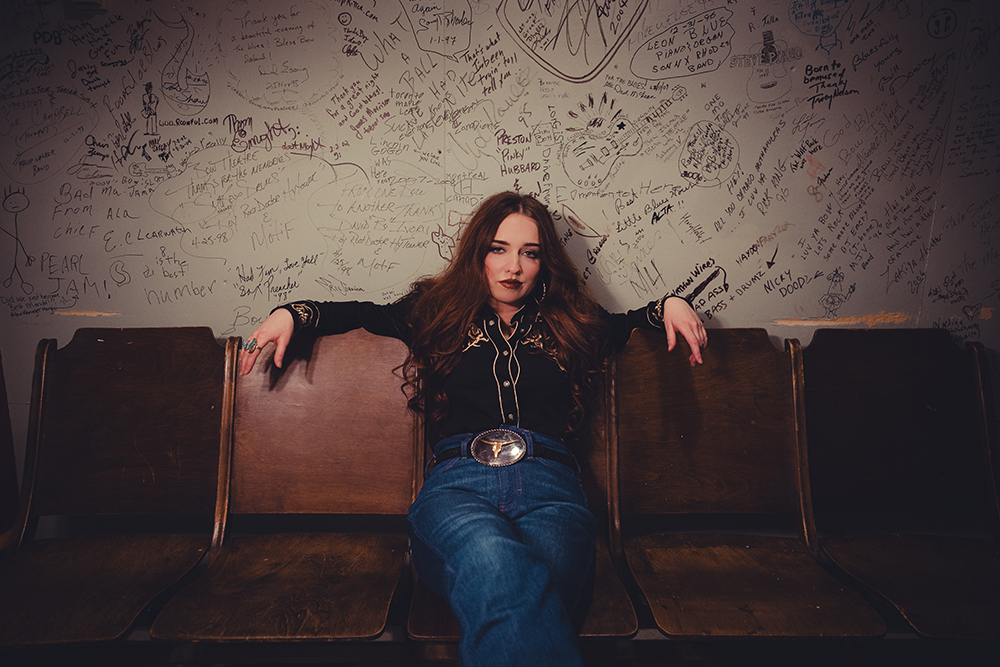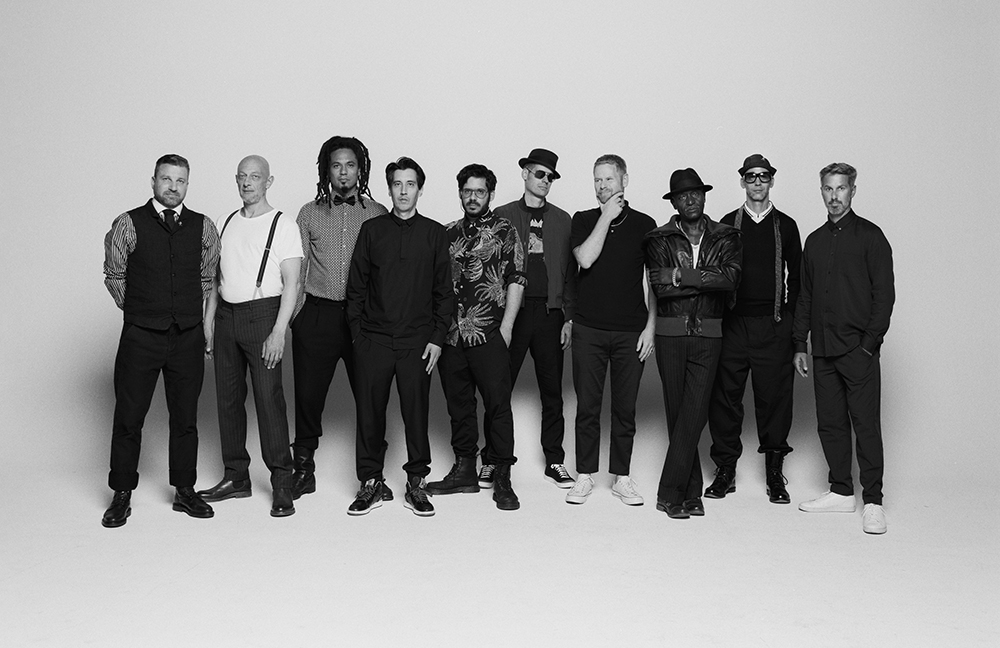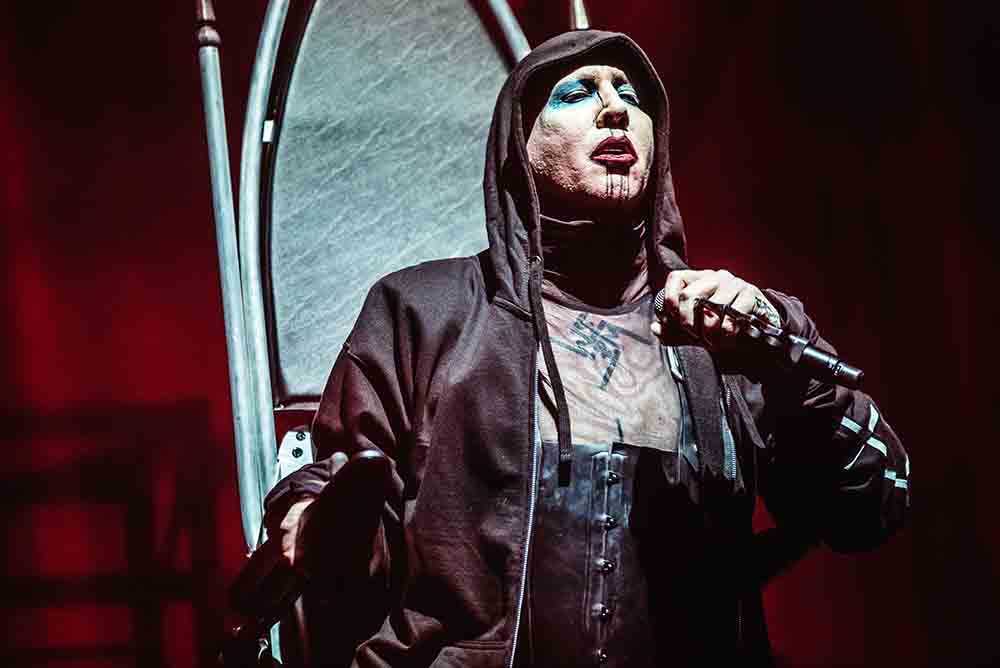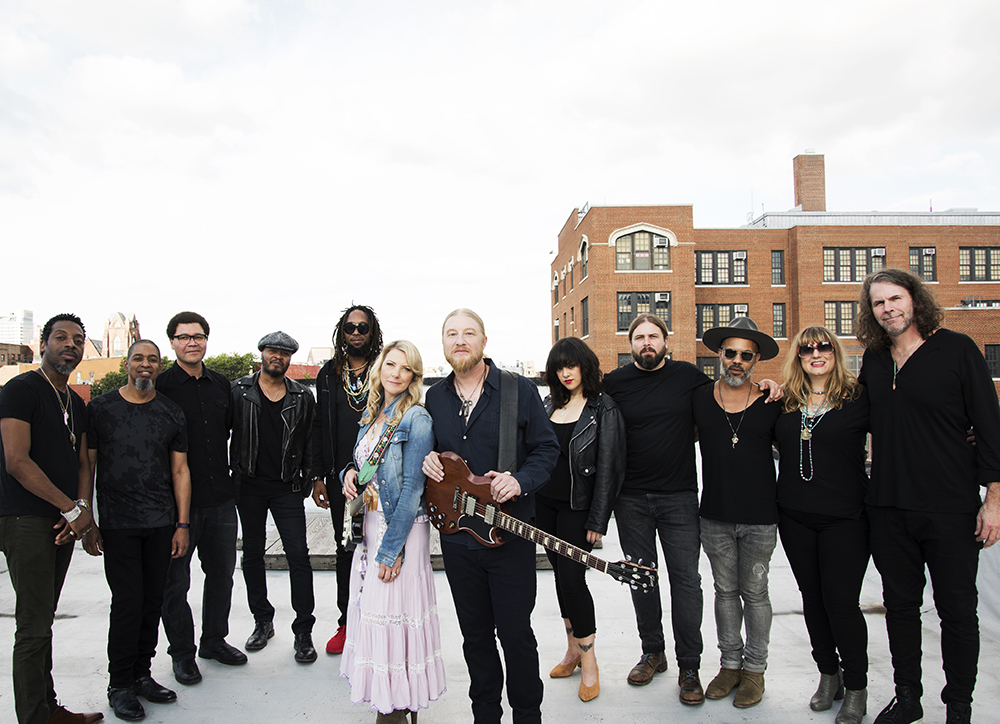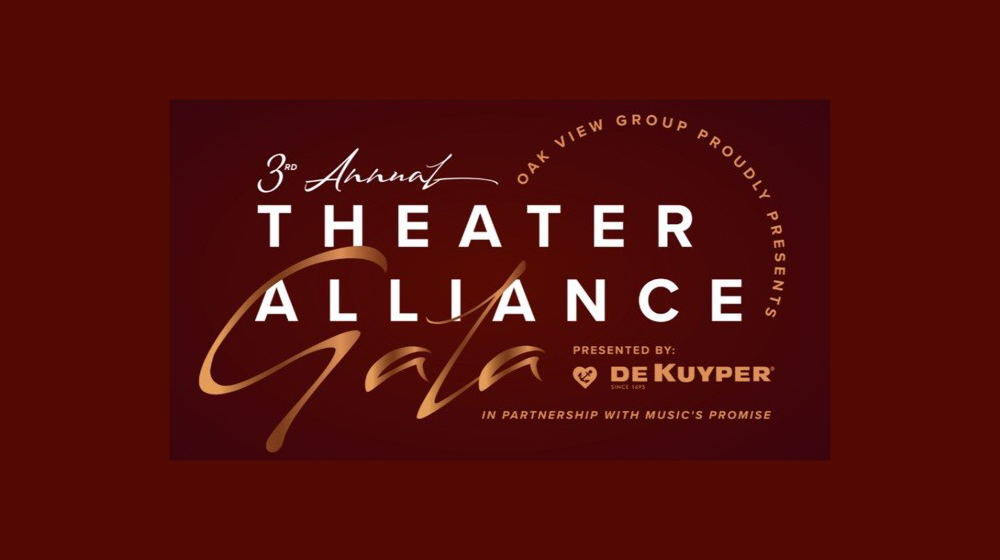This week In the Hot Seat with Larry LeBlanc: Ian Simon, co-founder, Strangeloop Studios & Spirit Bomb Records.
While Strangeloop Studios’ co-founders Ian Simon and David Wexler are real, increasingly their growing artist roster isn’t.
Both of the concert and live event visual specialists come from music backgrounds providing live visual designs on the road. Simon toured with Kendrick Lamar, Future, and Ms. Lauryn Hill, and Wexler toured with Flying Lotus, and Skrillex.
Founded as an audio-visual collective in Los Angeles, Strangeloop Studios has become one of the leading creative pioneers of the new digital media realm, providing design and content for live events, and digital media, including producing music videos, short films, and immersive experiences.
It has created original content for The Weeknd, Kendrick Lamar, Lil Nas X, Flying Lotus, Micah Nelson, SZA, Lizzo, Pharrell, G-Dragon, Anderson.Paak, Earthgang, and David Gilmour of Pink Floyd.
In 2019, Strangeloop launched Spirit Bomb Records, the world’s first virtual artist record label, receiving sizable investment from Warner Music Group, Chinatown Market (which since changed its name to Market), Sony Music Entertainment Japan, and the Japanese label Avex Entertainment.
Spirit Bomb’s most prominent product is music but in creating their own intellectual properties within the virtual reality and extended reality space, it more closely resembles a multimedia film studio of the future.
Each of its artists characters represent multiple pieces of available content across any given medium, from music to movies to video games. And since these are Spirit Bomb’s own creations, the company controls all aspects of their activities.
Furthermore, for live artists who aren’t quite sure what to do with a recorded track, Spirit Bomb can provide a new creative outlet, by developing a character closely aligned with their personality and musical traits.
Among those that Spirit Bomb’s virtual artists have collaborated with are Mr. Carmack, the Glitch Mob, Zeds Dead, the Underachievers, Huxley Anne, Sweater Beats, Two Fresh, and Salva.
Last December, Spirit Bomb’s most popular virtual artist LV.4 headlined a sold-out show at Mack Sennett Studios in Los Angeles and performed a 30-minute set to a sell-out crowd wearing 3D glasses.
Spirit Bomb’s motto should be, “I saw music’s future, and its name is……(fill in the blanks).”
You partnered with Strangeloop/Spirit Bomb co-founder David Wexler for your first tour of doing concert visuals in 2012. With a background of taking classical piano for 9 years, he had been signed to Flying Lotus’ label Brainfeeder, and was an early guiding force for you.
I have to stop you. Dave has 9 years of piano experience? Where did you find that?
I found it on an episode of the Hustle Like U Broke podcast.
That right?
Yes.
I’ve known Dave 12 for 13 years, and I had no idea that he had such a well-crafted background. I have a musical background as well. David and I met through music He then introduced me to art and visuals. He was starting a record label, and I was his first signee. That was the way we started collaborating together. I was a jazz guy growing up. That’s how I met him. I was a jazz drummer, and that is how I met Flying Lotus, and Thundercat and a lot of guys out of the L.A. scene which led me to Dave. I’ve heard him noodle around on the piano, and he’s quite talented, but (I thought) a God-gifted talent. I didn’t know that it was there (from studying piano).
You had studied drumming.
I had a brief tenure studying with Peter Erskine (of the jazz fusion groups Weather Report, and Steps Ahead; voted Best Jazz Drummer of the Year 10 times by the readers of Modern Drummer magazine and elected to its Hall of Fame in 2017). I was living in Santa Monica, and he eventually passed me on to one of his students, but there was a period when I was under his direct tutelage.
Do you get to play drums anymore?
Funnily enough, the WAVE’s CPO (chief product officer) Adam Siegel has a brand spanking new set of Roland V drums, and I have taken the liberty of popping over to his place in Laurel Canyon and playing them as often as I can. I have been living in not the biggest place in Silver Lake. I still have all my cymbals and snare drum, but I sold the rest of my kit when I moved back to L.A. 8 years ago. I think that’s (buying a drum kit) is the next thing for me.
Who doesn’t remember their first drum set, and who doesn’t feel their pulses race when they get their hands on that special new piece of drum gear?
I was pretty allergic to digital drums for a long time. I thought that the sounds were sub-par. I have to say they have figured out some crazy stuff with this new generation. I am very impressed. So, I think that might be my next move.
I’m from Toronto, and I grew up with Rush and Neil Peart with his famously grandiose drum sets which could include more than 30 pieces.
Hopefully, someone will stop me before I surround myself with 30 toms.
Who were your main guys?
I was a big Elvin Jones guy. He was really the one that put me on to drums. I was very much into post-bop with Wayne Shorter and Herbie Hancock, but I got into some of the more experimental stuff too, Sam Rivers, and Cecil Taylor. But my favorite drummers were Elvin Jones, Tony Williams, and Roy Haynes; and then later on Chris “Daddy” Dave. I had a seminal experience watching (saxophonist) Kenny Garrett with Jeff “Tain” Watts (a drummer who spent his formative years with Wynton and Branford Marsalis) when I was about 14 years old that is probably imprinted in my mind forever.
Max Roach?
Max Roach was definitely an early influence. Max Roach was a favorite drummer as was Art Blakely. Blakely, especially harmonically and melodically, was one of my favorite guys. Late ‘60s and early ‘70s hard bop, and post bop. Those drummers were just dropping bombs.
Billy Cobham?
Billy Cobham and (the track) “Red Baron” (from his 1973 debut solo LP “Spectrum”) was one of my favorite classic songs.
Leland Sklar, bassist on “Red Baron,” once remarked, “’Spectrum’ is such a benchmark for so many people. There was a sort of fire in it. It was new ground and it wasn’t very analytical. It was more flying by the seat of your pants.”
Similarly, there’s an improvisatory quality to much of the output from Strangeloop/Spirit Bomb. It’s very loose.
Indeed. I feel that a lot of the visual style is an outgrowth of wanting to add a lot of musicality to what ordinarily was a lot of visual stuff going on with live musicians; that didn’t seem to much pertain to what was happening musically. So it definitely trickled down to what became our more fundamental practice.
The first time I took notice of Strangeloop was the 2020 virtual Burning Man festival when the EDM animated artist Xen presented a trippy digital DJ set playing a blend of tracks from artists signed to Flying Lotus’s Brainfeeder label, and Zeds Dead’s Deadbeats label.
That was one of our first experiments in creating a virtual experience in Notch where we were running that performance in real-time and streaming it out to audiences.
Xen’s Burning Man set transformed the critical sphere of video art into a digital reality.
There’s this concept that I call digital flattening which is that as humans we are all given the same channels to express ourselves digitally; whether it’s Instagram or Twitch or live streaming something like at the Burning Man site. And it provides a very unique window for virtual beings to pop into, without immediately distinguishing themselves the way that they would in the physical world, where you do some kind of display to be a virtual character. You need some kind of conduit to experience this digital behavior versus online you can ostensibly, if the artwork is interesting enough and without realizing that the concept that you are looking at is not a real human, but rather a virtual being. So yeah, the experience that you are describing of seeing a lineup of virtual humans, and that innate reaction, is what we wanted to explore.
Spirit Bomb has since created its own virtual superstar artist, a biomechanical cyborg LV.4, often simply known as LV, that headlined a sold-out show at the Mack Sennett Studios in Los Angeles on December 8th, 2021. He performed a 30 minute holographic 3D set with Flying Lotus, Mr. Carmack, and the Underachievers, to a crowd wearing 3D glasses.
After releasing “Run It” with Mr. Carmack, LV.4 has since returned with a hip-hop co-production with Two Fresh, featuring the Brooklyn rap duo the Underachievers (AKT–Akeem Joseph, and Issa Gold) titled “Harrison Ford.”
Working with a virtual artist was certainly a new experience for the Underachievers although as they explained, it was a fun process. “We’ve never worked with a robot before – but once we heard the beat it was an easy session,” they said. Two Fresh echoed those sentiments stating, “Working with LV-4 was inspiring, never thought a robot could have swag, it was different but incredible.”
So it was a great thrill for you and your team to put on LV.4’s sold-out show at the Mack Sennett Studios in December?
Yeah, in fact, a learning experience. I have gone out and touted the virtues of virtual artists in that they will never miss a show. That they can be in 10 places at the same time. They always show up on time. And as you could expect, it was our first time doing the show in front of an audience in L.A. like that so it took a little longer than we expected. We had a line around the block waiting for L.V. 4 to show up. After all my experiences that there would be none of the fallibilities of human performs, LV.4 was about 45 minutes late to his own show. But a lot of incredible people forgave him. That was another cool experience.
Another cool experience was that we had some of our favorite human musicians there, BDY and Machinedrum, and Flying Lotus was in attendance as was Hannibal Burress. You could see the juxaposition of human musicians, and the immersive virtual artist experience, and it was pretty thrilling.
Utilizing 3D Live’s Ghost Series 3D LED Display technology for the sold-out show, the audience and online viewers on TikTok Zoom were taken on an audio and visual journey.
Generally, our team is skewed toward millennials; some slightly older, some slightly younger, so learning TikTok was a new platform for us. But part of the reason that we liked it was we were really struggling on platforms like Facebook, Instagram, and Twitch to reach new people, especially younger people who tend to be more experienced with virtual artists. We were getting a great response from the people who were already aware of Strangeloop, and what we were working on. But TikTok with Zoom, now we could push our characters out to people who have never seen them before, and they give us this incredible feedback from real audiences and real fans as to whether they (the characters) are resonating.
The online views for the show were quite impressive.
It was the first time we saw a really meaningful, organic reach. Sending it to their friends, sharing it, and coming back, and watching it multiple times. Yeah, within a few weeks we had over 100,000 followers. The coolest thing was the engagement. People asked not “What is this? What am I looking at?” but “What is going to be next?” and then “How can I see you live? People were really eager to learn more and interact with LV.4.
Have you heard from Harrison Ford yet?
So far he’s been present and certainly has consulted LV when LV is down in the dumps.
Not the praying mantis Harrison Ford. I meant have you heard from the real life Harrison Ford, the actor, yet?
No, unfortunately, nothing yet from the real whip-snapping Indiana Jones himself. But surely that’s because he hasn’t seen it yet.
Was Dave on the road with Skrillex when you two met?
Yes. We met before that, but that is when our working relationship started. He had known Flying Lotus since they were in college together, and I had met Flying Lotus through my best friend at the time Austin Peralta who was signed to Brainfeeder (Records) which is Flying Lotus’ label. Dave was doing Flying Lotus’ visuals. I’m pretty sure that is how he connected with Skrillex and that kind of opened up a world of possibilities in terms of concert visuals. He came back to L.A. from one of those tours and informed me that he had got me a job doing visuals on the road with someone, despite the fact that he had yet to train me on how to do visuals. But he lined up this gig.
Wasn’t his advice to you, “Don’t worry you will figure it out.”
That is exactly what it was. His logic ended up being very prescient because he said, “I have made all of the visual content. All you need to do is take it on the road, and play it musically in reaction to whatever the artist is doing onstage.”
For your first show at Webster Hall in Manhattan, you were nervous as hell, and you went outside, and two guys were talking, “Okay should we take the reds now, and blues later?” You realized that “All I have to do is put up some trippy music, and I am going to be okay.”
It was a giant weight off my shoulders when I heard that conversation because I was so stressed. I had no idea what the bar was for what people were expecting for visuals. I didn’t know if they were things that you would never do. I realized that this was a nascent medium. There were no rules, and most people were just looking for a stimulating experience for that moment.
That has certainly changed with the use of virtual reality technology enhancing performances.
We ended up using that rubric for how to do visuals that artists take on the road. It was more if they (our live team) had musical training because we could give them the visual software, and teach them the visual software. It is much harder to give someone musical instincts in a short period of time.
Tech support for bands for decades was primarily working with roadies with limited or questionable skills. It was like, “Let’s try and figure out how to put video on the back of the stage, and make it come from the LED lighting, and have it all mixed together,” using crappy playback systems that crashed all of the time.
And doing concert visuals was a great milieu to work in. Dave also has a significant background. His grandfather is Haskell Wexler so he comes from a strong synesthetic style.
One of the world’s most accomplished cinematographers, Haskell Wexler shot Elia Kazan’s “America, America” (1963); Mike Nichols’s “Who’s Afraid of Virginia Woolf?” (1966); Norman Jewison’s “In the Heat of the Night” (1967); and John McTiernan’s “The Thomas Crown Affair” (1968). He also directed “Medium Cool” (1969), filmed during the chaotic Democratic convention in Chicago in 1968.
Haskell Wexler was a celebrity cinematographer,
Yes,
And a lifelong advocate of progressive causes.
He was not a slave to convention. He was someone who did what he thought was best suited for what the art needed in that given moment. I think that Dave took a similar approach with how he taught me how to do visuals–something that became my own style–which is really trying to tell a narrative story, even amidst the frenetic and, as you said, improvisatory nature of the visuals. And that was a stark contrast to what people were doing with the screens at that time which was usually a shiny revolving chrome logo during the set. When Dave would show up with Skrillex, or I would show up with Kendrick (Lamar), and we’d take over these screens, we’d play this barrage of footage, and sync very tightly with the music, and then we’d get updates, and so we’d load up another logo for the next set. So that was very crucial for us distinguishing ourselves in the early days of what became our studio.
What lighting people used to do was to run the lighting in a linear way, not unlike the concert lighting shows of the ‘60s, and early ‘70s.
Yep.
As with new filmmakers in the late ’60s, and ‘70s that pushed the limits of film in Hollywood, people doing concert visuals came to think, “We don’t have to do the standard thing. Why don’t we push the envelope?”
Yeah, and similar to that film era too, we were supported by new technology that allowed us to approach it in a different way. The advent of being able to run all of our visual designs off of really powerful laptops, and lightweight software meant that we didn’t have to drive around with multiple cases of analog video gear in order to make something dynamic happen. That draws parallels to all of the new techniques that people were employing in the Golden Era of the new Hollywood of the ‘60s and ‘70s where suddenly they were experimenting with new toys, and there were no rules of what people were supposed to do with them.
The first software that most concerts crews fell in love with was Resolume.
Resolume is a live video mixing software package used to deliver high-quality performances, from club VJ-ing to audio-visual arena, theatre, and stadium shows. Resolume allows for immersive graphics and projection mapping workflows, utilizing SDI inputs from cameras and more.
Resolume is video playback software, but it also has some pretty robust real-time generative video features.
A big step up from Final Cut Pro, eh?
(Laughing) It was indeed. Those days prepared us to appreciate what we have today.
There has since been the emergence of real-time software Notch to produce video content which allows for live interplay within the stereoscopic space to create 3D LED shows .
That’s exactly right. I would say that Notch in the last 6 or 7 years has just been a paradigm shift in the kind of ambitious animation that you can make with real-time inputs, and outputs, and modify it on the go.
There’s now the Ghost Series 3D LED Display technology by 3D Live which produces a holographic 3D effect for indoor and outdoor LED applications.
Yep. It has become even more democratized for a new generation to learn the elements.
With advanced computers and editing suites, Strangeloop Studios must look like a mainstream film studio. What size staff do you have?
With our more recent expansion with Spirit Bomb, we are now at 11 heads total. The bulk of them are on the 3-D animation, and production side. They fall into a bunch of different categories of specialists. We generally have employed people who have a wide swath of talent. Real generalists who are able to not do just one part of the content creation pipeline, which is more like how Marvel films are done, where each individual is highly specialized, and hands-off a scene to 15 different individuals to complete it. With the quick turnaround time required by the music industry, and because of the artistic license it affords, we have always erred toward having generalists who can take their creation from idea to completion, and really put their own stamp on it. We found that was a much more fluid production process which is take an artist’s sonic identity, and present it visually for their live shows. Trying to introduce too much process into that will sometimes kill our kinesthetic impulses.
Also, that would take too long.
And also it would take too long. It is not unusual for us to get a call two weeks before a tour goes out, for a tour that has been planned out for 8 months, to create the entire 90-minute visual set. So we had to get pretty good at throwing stuff together more quickly.
At the same time often hearing, “We don’t have any budget left.”
Exactly. They decided to spend it all on a flying B stage that they ended up scrapping anyways, but that is where the content budget went.
Have you sprinkled your staff with musicians that you taught visual software to?
Yes, especially the ones that go out on the road. And a lot of those are not full-time. They are more freelancers, and often times they will get attached to an artist, and we will send them out with that artist. We have certain visual operators who started working with 5 different artists with us, and then they found one that they jelled with, and they are now basically on their full-time staff and have become part of their touring camp; especially when it came to the people going on the road as opposed to the people just creating the content then is taken on the road. We try to work exclusively with people that have had some musical training in their background.
Other than focusing on the creation of its own artists, Spirit Bomb encourages musical collaboration with IRL and human artists. Is that something that evolved after the label was created or was that part of the original concept?
It really started with the characters. Once we had our first animators come on full-time, as opposed to being just freelancers hired from gig to gig, it was the first time of finishing a big project, having a wrap party, coming back to the studio on Monday, and being like, “We’ve got another two and half weeks before our next engagement starts. What do we want to work on? It was some of the most fun that we’ve had as a studio. We produced an animated short, “Children of the Void,” which was half 2D and half 3D animation.
I was watching “Children of the Void” against what is happening in Ukraine right now.
I know, right?
An independent group of wild children traversing through a post-apocalyptic world of significant damage to urban residential areas.
It’s not the first time (that Ukraine has been mentioned). It has cultural touchpoints that we didn’t expect including some of the very specific imagery of the kid holding up his hands to the tank. Significance and context.
“Children of the Void”
There are similarities in the destruction of the terrain.
I think that a lot of the semantics are part of the reason that they can be transposed into different things that happen in the real world because, unfortunately, there are still a lot of examples of a rag-tag group of people trying to be independent standing up against entrenched hegemonies that are trying to absorb or erase them. I wish it were less relevant, but it definitely came from a place of wanting to express stories that we saw playing out around us, and in history.
“Children of the Void” was a project that you didn’t really have the time, resources or infrastructure to take on.
Yes. it was before we had a full-time staff. That was the same kind of impetus of the Spirit Bomb characters, where we started designing characters without really a sense of having the record label yet. The original impetus was that we wanted to freeze these characters for a project for an artist or a client. We didn’t want to treat them as avatars for individual people. We also didn’t want to launch them to a TV show or a movie. We wanted to conceive them online with their own social media accounts, almost as if they had some semblance of their own agency and autonomy.
We were working on these characters and showing them to artists as they came into our studio. Nibbling away at them between projects is a tough way to really build something like a character in a universe. It is really hard to work three days here and then, “Oh, we have to jump on the Lil Nas X show, so we have to shut it down” and “Oh, we have a week here, and we’ll pick it up, and then we move on to work on Flying Lotus.” So that is why we ended up raising our first external capital so we could have a team dedicated to focusing on it. That kind of lit a fire under us to figure out how to make these characters sustainable, and figure out how they would live in the world so to speak. It was an intellectual property that we were saving internally until we had a strategy for how we could fund that project.
That is when investors including Warner Music Group, Chinatown Market (which has since changed its name to Market with the investment entity Ink Capital), Sony Music Entertainment Japan, and the Japanese label Avex Entertainment all jumped in to invest in Spirit Bomb?
It is indeed. We had never done any fundraising before. After Dave and I started the company, and we cemented our team, we covered overhead out of our operating budget. So we did a TechStars Music Accelerator program in L.A. to kind of get the bearings of what it meant to raise capital
The startup accelerator Techstars connects investors with promising startups, with corporate partners in a range of industries via its Demo Day which was virtual in 2020, showcasing promising startups pitching their businesses.
What potential investors expected of you likely was to build out a business model around the created characters.
Given our background it’s probably not a surprise that we saw being a sustainable venture was to create, and build immersive live experiences around these characters that could fund their futures and their creations.
I think that is where Warners and Sony and Chinatown got interested was to imagine how you could bring a character into the world that is not limited by a burdensome corporeal form. Exploring the possibilities of what it would be like to co-create an artist that doesn’t physically exist. That can be touring in 20 cities at once, and can be interacting with people online at the same time that they are “in the studio creating new music.
Particularly we saw one of the great benefits of having a virtual character is that it alleviates some of the stress on musicians these days to also be content creators and also be the face of their own music and be on social media. We work with people like Lil Nas X show at not only making music but also being the face of their music. Yet we know that plenty of musicians are not natural self-promoters; are not great content creators; are not great marketers; and we look at our characters as essentially the visual side that would open up people who just wanted to work on music. To funnel music through our characters, and not have to worry about exposure because we had already built that platform.
Warner Music Group has positioned itself to develop new music experiences by expanding into the fast-growing Web3 universe of NFTs, blockchain, crypto, and the metaverse.
They have been incredible. I’ve been very touched by how ahead Warner, in particular, was; particularly on Web3 space, but also introducing us and brainstorming with us on how that might be developmed for our characters, and so many of the philosophies, and talking of how Web3 can be elevating individual creators, freeing up excess capital, and allowing for direct patronage of art is really material to how we see our Spirit Bomb characters as vessels for creators.
An immersive virtual artist will never replace the physical performer.
No. Nothing we are making is something that you would go to see instead of seeing your favorite human artist performer.
However, with immersive virtual artists you can produce virtual events with or without streaming and also do TV, film, and video productions. You can have multi-events with the same immersive virtual artist going on at the same time in different places. They can be in the studio, and be on Twitch or TikTok at the same time. There are just so many multi-use opportunities for virtual animation.
Yeah, including for (human) artists as well. We never would have felt comfortable wading into this if we felt would be reducing opportunities for artists but we are 100% on the same page. We don’t want to replace real artists with abstractions, rather we want to introduce new marketing opportunities for living artists. We feel that this is an opportunity to have another outlet for their music, to monetize their passion, and have another creative outlet to try some stuff that they might not try for their new projects.
We were also inspired by immersive experiences like teamLab in Japan, and Meow Wolf or Day For Night here. Where we are often closely linked to music but really providing experiences for people to come with their friends and see something and be immersed in something inspiring. And that was inspirational as the musical performance side of how we put the shows together. But that is also what makes you feel that this is an opportunity to have another outlet for human artists that their music to be monetized, and their passion developed within another creative outlet. To try some stuff that they might not try for their new project.
Our intention is not to white label anybody either, right? It doesn’t cost our character anything to trumpet out to the world with a human making the music that the character is playing. So we are hoping also to see characters who can also become a platform, and think that is very much in line with the values by which we work.
Well, you work extensively with my fellow Canadian The Weeknd (Abel Tesfaye) and his creative director, photographer, director, designer La Mar Taylor.
Indeed, yep. We have some strong Toronto connections. The Weeknd is one of our longstanding clients.
With The Weeknd and other clients, you work closely with the virtual concert platform WaveXR.
They have been collaborators for the past few years. We did their creative direction for a lot of their early shows and we are very intimately involved as you might expect on The Weeknd’s TikTock WAVE show. They have a similar approach to how they put their team together, where almost everybody on their team is a musician or an artist.
Dubbed “The Weeknd Experience,” the show, which aired on TikTok on August 7th, was Wave’s highest-profile project to date, drawing in two million viewers and leading to $350,000 in charitable merchandise sales, according to TikTok.
The show depicted a digital avatar of the Weeknd, adorned in the same red sports jacket and shaded glasses he wore in his “Blinding Lights” music video, dancing on a mutating stage that shifted from city wreckage to tree branches to a gigantic figure of himself floating in the vast expanse of space.
We creative directed it.
I really enjoyed the work you did on Micah Nelson’s video “Along The Timey Road,” from his future-folk project Particle Kid, utilizing rotoscoping animation techniques.
Yeah, that was just pre-pandemic I guess. That was a real fun one.
The track comes from the forthcoming double album, “Time Capsule”, out on April 22nd via Overseas Artists Recordings.
The rapid advancement of technology has made animation, and visual effects (VFX) the fastest growing segments in the global media and entertainment market.
You hit the nail on the head. It’s been the last 5 years that what used to be this giant schism, this real path in terms of the quality that you could achieve in a video game versus what professional rendering can be like with Cinema 4D (the professional 3D modeling, animation, simulation, and rendering software). It was insurmountable for a long time.
We have fully switched over all of our production properties to game engines, particularily the Unreal Engine 4. We are now on Unreal Engine 5 (the latest version of Epic Games’ creation platform).
The new version of Unreal Engines 5 is a leap forward in terms of crafting geometry, lighting, and animation in an unprecedented level of detail.
And you could only use game engines for very specific use cases, but with the advent of the NVIDIA video graphic card (bringing the power of real-time ray tracing and AI to applications), and the incredible team at Epic, they have managed to make a product that can do whatever we need it to do. The barriers for entry to learning, it is high. I certainly don’t really know my way around Unreal versus Notch but I can kind of putt around in it. Notch is a little easier to pick up, but game engines have completely changed our workflow and our ability to do things, especially for something like the Grammys. We had Lil Nas X at the Grammys, and there were half-a-dozen streams, and a giant pixel area. What would normally take a few days to render can now be done in a matter of hours.
Lil Nas X kicked off his 2022 Grammys performance with dozens of defamatory tweets, and YouTube clips behind him on a giant screen, and playing over his Billboard chart-topping hit “ “Montero (Call Me By Your Name),” as he used the microphone to simulate a penis. He was then joined by Kentucky rapper Jack Harlow to perform their collaborative track “Industry Baby,” which, released in July 2021, is currently sitting at 1.19 billion streams on Spotify alone.
The transformation to a fully digital music ecosystem, already underway in recent years, accelerated with COVID-19, and streaming events like Travis Scott, Marshmello, and Ariana Grande appearing in Fortnite.
Live events and music experiences sit at the heart today of so many metaverse aspirations, and marketing is now blending in-person, and virtual experiences to create IRL/virtual hybrid events.
Now Spirit Bomb has come along with something that is quite a bit different from what is out in the marketplace.
Yeah, it was such an interesting experience for us because on the one hand when we started Spirit Bomb we were planning on running it concurrently with our activities with Strangeloop Studios which is a cash flow business that was doing anywhere 10 to 30 visual shows a year of all different scales; augmenting music videos. But the focus always happened in live spaces, and we lost our accounts in a matter of 10 to 14 days. All of our contracts were gone. At the same, we had just started writing for Spirit Bomb which we were not planning to tether that to the virtual stage until we had built some awareness that we were talking about in places like the WAVE, on social media, and in gaming environments. Meeting people where they were at digitally. It was interesting watching what were already vibrant communities suddenly became the only places you could really socialize and it happened in a couple of weeks.
With Spirit Bomb, you now have to be involved with marketing whereas you didn’t previously have to do. When you are working for others, including real live artists, you don‘t have to concern yourself with marketing. That is taken care of. Now, you have to look at marketing, branding, and other label-related matters.
That was a bit of a bucket of cold water. We have always had the benefit of working with your favorite artists type of acts like Flying Lotus, and then complementing that with acts like the Weeknd and Lil Nas X who have a really wide reach. We never needed a salesman’s accounts department. It was just word of mouth, and that was fine because it was such an industry-centric niché that we were in. But trying to launch an artist from scratch, and running a record label, you couldn’t be more right. It was an exercise in becoming comfortable with self-promotion and finding people who are experienced in that. Neither Dave nor I have ever been particularly focused on building our own individual brands. It’s been much more about realizing the artistic vision of the acts that we were collaborating with.
You could put together a tour with a virtual solo artist or with number of the virtual characters or a mash up a billing of virtual and real artists. This is just the beginning of using avatar characters to express new things.
I do have a dream to have a live show that is not just our characters but some of our other favorites virtual teams out there like Teflon Sega who is working with our friends at the WAVE right now. Then Hatsune Miku who is the grand dame of virtual artists. To produce virtual artists in live concerts, I would love to see a lineup of different virtual characters with LV.4 for a festival.
Teflon Sega, who only performs as an avatar, is starting to the recognition that he deserves. Releasing a song a week, he’s collected 19 million Spotify plays, 10 million Soundcloud plays, and 15 million YouTube views. He has 100,000 YouTube subscribers.
What is most interesting about digital image-making in that by assigning a certain set of behaviors to a virtual character, the division between live subjects, and viral characters may be blurred. For example, I hear remnants of the late J Dilla with LV.4.
Definitely. It’s funny. We really want to mold the characters to what fans are resonating with. The beauty of these virtual characters is that they can be so responsive to what fans want; but we also don’t want to lose touch with who they are. I would never advise a human artist, “Listen to what people are liking, and do that.” I would say, “Express what you need to get off your chest, and what you need to get out into the world, and forget about what anybody says if it resonates or not. If you need to say it, say it.” So for that reason, Dave and I and the rest of the team have made sure that our influences and our passions bleed heavily into the characters. So it just doesn’t feel like some mechanical reproduction of what the data is telling us is resonating with the fans. That is why sometimes you will get a lot of J Dilla, some jazz influences, and early graphic loops.
In our early days of Spirit Bomb there was a fair amount of whiplash (from fans) until we figured out the right way to mediate our own influences, and have some distance, and style behind the characters. But we are winning over more and more every day, for sure.
What is your background?
I was born and raised in Santa Monica, California and then I went to school at Columbia University (from 2008 to 2012) and lived in New York for 5 years and then came back here.
What did you study at Columbia University?
I was an anthropology, and music major. It was a double major. I mostly spent my music time at the computer music department there which veered more toward the contemporary classical side, spectral composers like Tristan Murail and Gerard Grisey. It was a little more the academic than the music that I ended up falling in love with.
I wrote part of my thesis in undergraduate based on African highlife music; and I looked at how Nigerian multi-instrumentalist Fela Kuti’s influence was circular with the African diaspora up to James Brown, and then came back to Africa, and then was appropriated by some of my Columbia classmates, Vampire Weekend (who met as Columbia undergrads and performed their first show at the student center).
I thought I was going to go into intellectual property law until I interviewed at some law firms, and realized, “Wow, you guys don’t talk about the philosophy of law at all do you? According to the letter of the law to protect your client’s IP. Around that time, my friend Austin Peralta was signed to Flying Lotus’s label, and was hitting me up on Facebook saying, “Come back to L.A. Do the music thing. Give me one summer in L.A.,” and that is when Dave and I got close and started the business. And the rest is history.
Larry LeBlanc is widely recognized as one of the leading music industry journalists in the world. Before joining CelebrityAccess in 2008 as senior editor, he was the Canadian bureau chief of Billboard from 1991-2007 and Canadian editor of Record World from 1970-80. He was also a co-founder of the late Canadian music trade, The Record.
He has been quoted on music industry issues in hundreds of publications including Time, Forbes, and the London Times. He is a co-author of the book “Music From Far And Wide,” and a Lifetime Member of the Songwriters Hall of Fame.
He is the recipient of the 2013 Walt Grealis Special Achievement Award, recognizing individuals who have made an impact on the Canadian music industry.

